Baiyun mountain national forest park was established in September 1992. It is located in the southern song county seat of luoyang, the hinterland of foulu mountain ridge, with a total area of 168 square kilometers (64.9 square miles). It invites visitors to refresh themselves in its natural beauty.
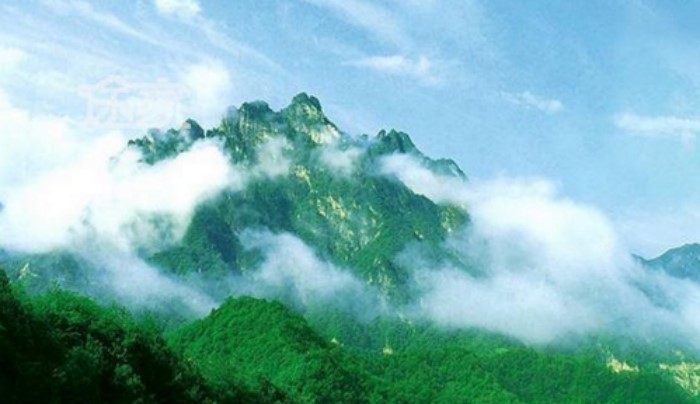
The forest coverage rate is 98.5%, which is in the transitional zone between warm temperate zone and subtropical zone. The vegetation of north and south China coexists here. In baiyun mountain national forest park, 204 species of animals, 1991 species of plants, 3000 species of insects. For example, there are ancient and rare plants: dendrobium and alpine rhododendron, as well as some rare animals: giant salamanders, leopards and golden eagles. It is a good place to appreciate the original beauty of nature. Water curtain cave, folding waterfall and fairy pool are all here. The scenery is beautiful beyond description.
At 2,150 meters (7,054 feet) above sea level, baiyun peak is one of the main peaks of funiu mountain. It is shrouded in clouds all year round, just like a fairyland on earth. There are folk songs and proverbs that say mountains can indicate changes in weather through the position of the surrounding clouds. Dazzling and fascinating, it’s the perfect place for climbers to find something new.
This is the highest point of the funiu mountain ridge, considered the highest point in central China, rising 2,216 meters (7,270 feet) above sea level. The mountain peak is shaped like a crown and seems to reach straight into the sky. From the top of the mountain, visitors can enjoy magnificent panoramic views of the vertical distribution of vegetation, as well as the fascinating sunrise and sea of clouds.
Small huangshan is called small huangshan because it reminds people of the famous huangshan in anhui province, which is famous for its strange rocks. The beauty and strangeness of small huangshan are fascinating. Various rocks have been given strange names, such as the sea fairy, the twin stone and the bird’s nest stone.
These waterfalls are formed by the white river, which rises from the peak of the jade emperor. It has a constant supply of water, rushing down, washing out the scattered waterfalls and deep pools. The jiulong waterfall, qinglong waterfall and the amur pool are the most attractive attractions in the area. In addition, there is an 814-foot bungee jump, considered the highest in Asia, offering visitors a chance to challenge their metter.
The park’s average summer temperature is below 18 degrees Celsius (64.4 degrees Fahrenheit), with the highest temperature below 26 degrees Celsius (78.8 degrees Fahrenheit). It is a magnificent summer resort, but the blooming flowers in spring, the clear sea of water and clouds in summer, the deep red leaves in autumn and the majestic baiyi mountains in winter make baiyun mountain national forest park a year-round Chinese resort.
Detian Waterfall, Which Makes a Very Deep Impression on You
The detian waterfall scenic spot is located in daxin town, chongzuo city, guangxi zhuang autonomous region, about 145 kilometers (90 miles) from downtown nanning and surrounding Vietnam. This scenic spot has more than 40 tourist attractions. Among them, the most striking is Ban gioco-detian falls.
The waterfall crosses the border between China and Vietnam and is connected to banjuk falls in Vietnam. It has the reputation of being the second largest transnational waterfall in the world. Perhaps you have seen the famous Niagara Falls. You are impressed by its majesty. Similarly, the majestic tokuda waterfall gives a sense of breathtaking magnificence.
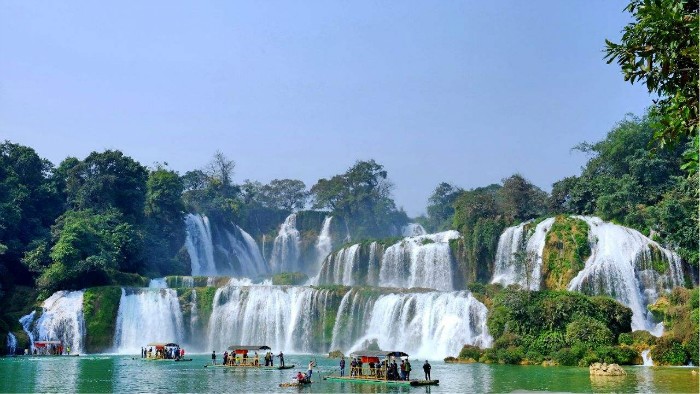
Below the tokuda falls is a deep pool more than 200 meters (0.12 miles) wide and more than 30 meters (0.02 miles) deep. There are many big fish in the pond and the fish are delicious. So the villagers who live there often come to the pond to catch fish. They usually sing folk songs while casting nets. The wild songs echoed in the mountains, a joyous, carefree, lively atmosphere.
Besides the detian waterfall, there are many other attractions waiting for you to visit, including heishui river, qiaomiao lake, guichun boundary river, shadun waterfall, no. 53 waterfall, as well as numerous cultural relics and rare animals. Abundant rainfall and moderate temperatures have brought evergreen to the picturesque landscape.
The blackwater river, as it is called in English, is dotted with verdant plants and strange hills. Of course, the water is not black. It gets its name from the black reflections of trees and hills. When you row on the heishui river, you can see the rotating water wheels, the houses of the minority zhuang people, the terraces and the laboring farmers.
Qiaomiao lake covers an area of about 5000 mu, surrounded by green mountains. The lake was as calm as a mirror. The mountains, trees and clouds reflected on the lake like a picture. Boating on miaomiao lake, listening to folk songs, enjoying the bright moon, enjoying the peace granted by heaven in the earth.
Guichun river originated in jingxi, baise city, guangxi. It flows into Vietnam and then back to China. The two countries are bordered by this river. On one side are zhuang-style buildings, on the other side is the face of another country. It’s interesting to think about the difference.
Shatun waterfall is another famous waterfall in the scenic area. The waterfall runs down seven terraces. Compared with the tokuda falls, the sandun falls are not so magnificent. It looks like a gentle woman who associates herself with the fascinating nature.
Chinese Lanterns, to Celebrate Their Peaceful Life
Paper lanterns originated in the eastern han dynasty (25-220) and were mainly used as lamps in ancient China. They use a variety of materials, such as bamboo, wood, wheat straw and metal. Paper and silk are the main materials.
Originally, monks used lanterns to worship Buddha on the 12th day of the first lunar month. During the eastern han dynasty, emperor liu zhuang was a buddhist and ordered the residents and citizens of his palace to light lanterns and worship Buddha like monks. Later, this custom gradually became a grand festival for the common people. In the tang dynasty (618-907), people made lanterns to celebrate their peaceful life, while bright colorful lanterns symbolised and celebrated the prosperity, strength and strength of the country. Since then, lighting has become popular in this country.

Before the use of gas and electricity, lanterns were once used for lighting, but now they are merely decorative or, more importantly, used during the Lantern Festival each year.
It was mainly used in palaces in ancient times. It is famous for its exquisite craftsmanship, elegant and dignified pictures and court features. When making palace lanterns, window frames are made of fine wood and covered with silk or glass. Various patterns are painted on the cover. These dragon and phoenix lanterns were not only used as lamps, but also as decorations for the palace. They come in many shapes, such as octagon, hexagon, and even diameter.
The lamp shade was covered with gauze. Bamboo used to be the frame, but now it’s made of wire, and candles are made of light bulbs. Of these lanterns, the red ones are believed to be the most in the world. It was made with red gauze. In Chinese culture, red lanterns are a symbol of booming life and prosperous career, so they are always hung on important festivals such as Lantern Festival, Chinese New Year and National Day in parks or main streets. In some famous chinatowns abroad, you can see red lanterns all year round. They have become the symbol of Chinese culture all over the world.
Chinese Lacquer Ware, an Exquisite Chinese Craft
Lacquer ware is a kind of exquisite Chinese handicraft, it sends out a kind of peaceful burnish. As the earliest users, the Chinese began to appreciate its beauty from the neolithic age. In the past few hundred years, it has played an important role in the development of Chinese arts and crafts and has had a great influence on world art. Between 6,000 and 7,000 years ago, a wooden red bowl unveiled the history of lacquerware technology.
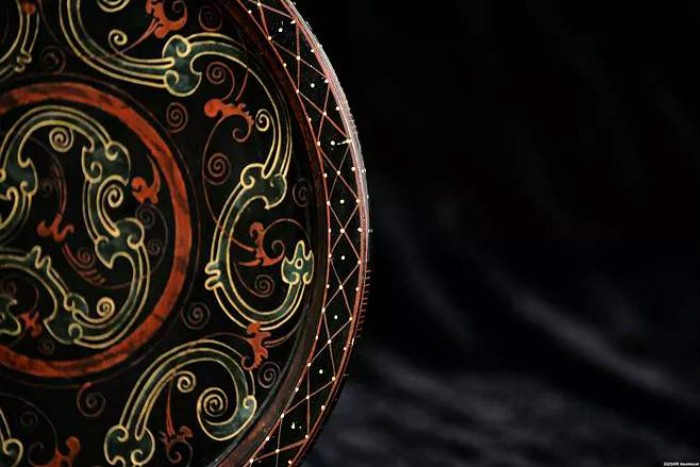
Ancient Chinese lacquer ware was made of natural lacquer from sumac. Sumac should be 10 years old. Liquid paint should be condensation in humid conditions, and then hardened, heat, acid, alkali resistance. In general, the manufacturing process is very complicated.
In 1978, a red lacquered wooden bowl and a red lacquered vase were unearthed at the hemudu cultural site in yuzhao, zhejiang province, evidence that the Chinese began making lacquerware during the neolithic period. The porcelain turned out to be made of natural lacquer. Early works were simple red and black. During the xia dynasty (21-17 BC) and the warring states period (476-221 BC), the variety increased greatly and industry continued for about five centuries. At the time, it was used for furniture, such as containers, Musical Instruments and funeral utensils.
During the han dynasty (206bc-220bc), the main lacquerware was also red and black. However, it is more widely used in plates, coffins, earrings, crates, board games and other necessities of life or decorative accessories. In addition, the manufacturing process has become more sophisticated, such as the use of color paint, needle engraving, inlay process, gold ring decoration. During the warring states period (475-221bc), this kind of pottery was popular for its exquisite craftsmanship and vivid pictures of animals and clouds. The lacquerware relics unearthed at mawangdui’s han tomb are more than 2, 000 years old. The yuan, Ming and qing dynasties were also prosperous periods, with more than 400 varieties used as common tools and decorations.
Nowadays, Chinese lacquerware has become more refined and spread in Beijing, yangzhou, Shanghai, fujian and other places. All kinds of lacquerware reflect distinctive characteristics: Beijing made lacquerware style luxury; Fujian is light, high temperature, corrosion resistance and waterproof; Sichuan is famous for its fine carving patterns. In addition, yangzhou artifacts are known for their elegant, delicate and unique creation techniques: shells are used as materials, processed into wafer-thin pieces, and then carefully attached to lacquerware. In the process, people will even inlay treasures such as crystals, jade, pearls and coral on lacquer furniture, tea sets and brush pens. Lacquerware made in the ancient city of pingyao, shanxi, shows luster after being polished by the hands of craftsmen. This is considered the most exquisite because of its simplicity, but radiating artwork.
Chinese Cloisonne, a Unique Art Form in China
Cloisonne is a unique art form that originated in Beijing during the yuan dynasty (1271-1368). During the “jingtai” period of the Ming dynasty (1368-1644), the emperor was very interested in bronze casting technology and improved the color processing to create a bright blue color with an Oriental aesthetic. After making a breakthrough in technology, his daily necessities were mostly cloisonne. Later, it became popular among the general public; Their favorite is cloisonne.
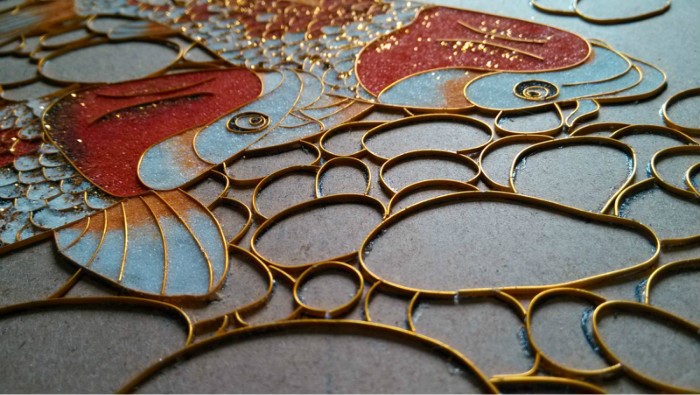
During the reign of emperor kangqian of the qing dynasty (1644-1911), cloisonne craftsmanship was improved and reached its artistic peak. The colors were more subtle, the threads more flexible and fluid, and the scope expanded beyond sacrificial objects into snuff bottles, screens, censers, tables, chairs, chopsticks, and bowls.
Cloisonne is made in a comprehensive and delicate way, combining the techniques of bronze and porcelain with the techniques of traditional painting and sculpture:
Model hammer: hammer the copper pieces into various shapes according to the design and connect them at high temperature.
Tinsel welding: in tinsel welding, the artist bends the copper wire into a delicate flower pattern and sticks it to the copper mold. Heating to 900 degrees Celsius is probably the most challenging step in the whole process. It solidifies the metal.
Enamel filling: through this interesting process, cloisonne wears a coat of color. The craftsman filled the glaze into a grid of filaments. One filling is not enough – filaments are squeezed and the surface is dull. They must melt the powder glaze in a melting furnace at 800 degrees Celsius, then remove the object and repeat the process three or four times until the surface becomes smooth.
China National Flower Garden in Henan Province
Established in 2001, the national park of China is located on the south bank of luojiang, luoyang city, henan province. Covering 255 acres, it is the largest peony park in China. China’s national parks have bred about half a million 9-color peonies and two million peonies of more than 1,000 different species. Among them, a 100-year old, 2-meter (7-foot) tall giant peony known as the “flower goddess” has caught people’s attention. April to early may is the best time to see peonies in full bloom in China’s national parks. Visitors can enjoy peonies, pavilions, lakes and mountains, as well as distinctive architecture. In the history of the sui and tang dynasties (581-907), traditional imperial garden art and peony flowers were perfectly combined in China’s national gardens. Here are the main sightseeing areas.
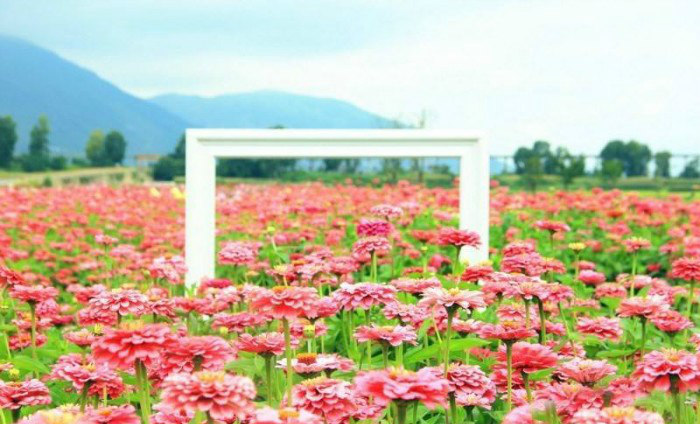
The place consists of burnt peonies and a huge gourd with three golden balls. There is a legend that the peony was brought up by the Taoist god taishang lao-jun who used fire to create golden jade, so it is called burnt peony.
The pavilion was inspired by a story about qiuweng and peonies. Qiu weng is a farmer who likes to plant peonies. He takes care of them as his family. The attraction consists of five pavilions, one on two floors and one on four. Visitors can see all kinds of rare peonies here.
The two pavilions here merge into one, like two qiao peonies, a treasure flower with two different colors. The tree was known as “big Joe” and “little Joe” during The Three Kingdoms period (AD 220-265) in China.
The lake covers more than five acres. Weeping willows flaunted on the Banks of the river, and countless fish swam in the river. Visitors can lie on the grass by the lake and feel the smell of spring. The mountain is man-made and has many jagged caves. The waterfalls flow down, creating a breathtaking landscape that brings the park to life.
This particular garden covers an area of more than 2,000 square kilometers (2,400 square yards). The aim of the design was to integrate butterfly elements into the landscape. During the peony cultural festival from April to early may, visitors can see more than 20,000 butterflies dancing around the peonies, which is a fascinating sight.
This is the first and only private writing museum in luoyang. Founded by the two brothers in 2012, it aims to preserve, protect and display cultural relics from different regions and dynasties. There are now more than 2,000 written artifacts and samples.
Shuanglin Temple and Zhenguo Temple in PingYao Ancient City
Pingyao County is 58.4 miles southwest of Taiyuan. This small county was noted for some magnificent residences in ancient traditional styles rather than any appeal in natural beauty.When Pingyao was inscribed on the UNESCO list as a World Heritage Site, two temples were added to the town itself as being worthy of preservation.
Shuanglin Temple
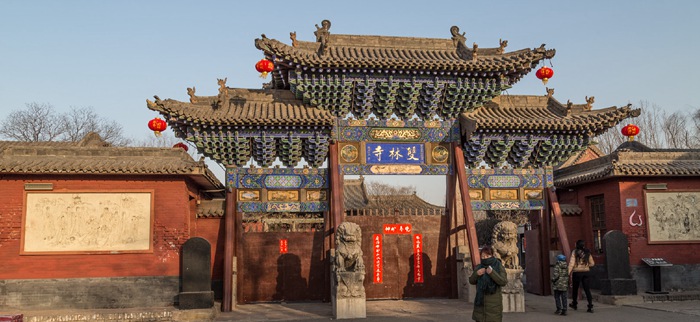
Located in the Qiaotou Village about six kilometers (four miles) to Pingyao Ancient City, the Shuanglin Temple is reputed to be the ‘ancient painted sculptures museum’. It houses more than 2,000 colorful sculptures reflecting the exquisite skills of the artisans of the Song, Yuan, Ming and Qing Dynasties. In 1997, it was included in the World Heritage List by UNESCO as an important cultural site of Ping Yao City in 1997.
Reconstructed in 571, the Shuanglin Temple has a history of about 1,400 years. It consists of ten large and small halls, and the sutra chanting hall and the monks’ rooms.
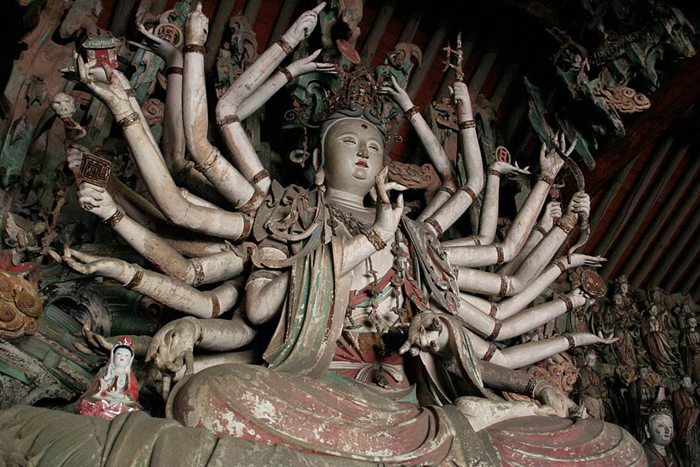
In Chinese, Shuang means two or double, and Lin, forest. The temple got its name from a Buddhist story. According to the Buddhist sutra, Sakyamuni who was the founder of Buddhism, entered nirvana under two trees; Hence, its name Shuanglin.
Most valuable colorful sculptures housed in Shuanglin Temple are made with wood moulds from Ming Dynasty, which kept traditions of the former dynasties of Tang Dynasty to Yuan dynasty. As a part of Pingyao Ancient Town, which is listed a world Heritage site, Shuanglin Temple attracts lots of tourists every year for its long history and profound culture.
Zhenguo Temple
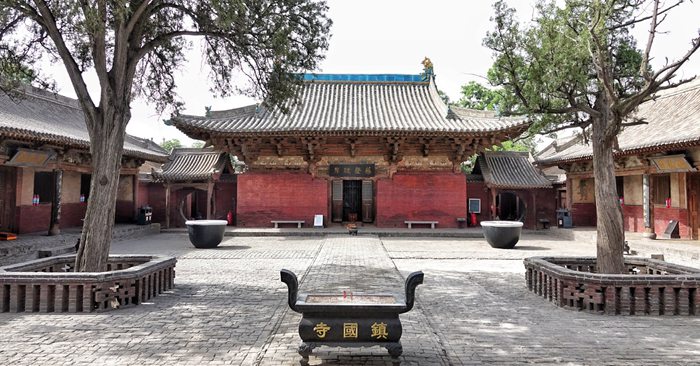
Zhenguo Temple is about 12 kilometers (about 7.5 miles) away from the northeast of Pingyao Ancient City, occupying an area of 10,892 square meters (about 2.7 acres). It was first built in 963 in the Northern Han Dynasty (951 – 979). Its 44 ancient constructions of different periods houses 62 painted clay sculptures, over 100 frescoes and more than 20 stone tablets which truly record the easy fusion of the Confucianism, Buddhism and Taoism in China. The fairy tale of Lu Ban, the ancient carpenter master building the temple adds a desolate mysterious color to the temple. Especially, the original structure of its Ten-thousand Buddha Hall constructed in the Five Dynasties Period (907-960) has never been changed for over 1000 years though it has undergone many restorations in previous different periods. The fine frescoes of the Beiqi Dynasty on the hall’s walls are also rarely seen in China, as provide precious evidences for studying the Chinese development history of architecture and fine arts.
The Thousand Buddha Hall is the oldest architecture in Zhenguo Temple; it is also one of the oldest existing wood-made architecture in mainland China. Different from other wood-made buildings, the whole architecture was miraculously built without nails. It is the rigid structure, strict materials and highly skilled technique employed with principle of statics that make this building stand stably for more than 1000 years. It is the gem of ancient Chinese architectures.
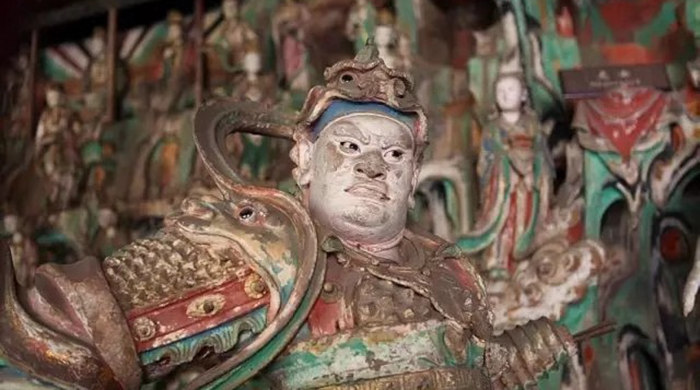
Painted sculptures in Zhenguo Temple are also precious. In Thousand Buddhist Hall, 11 of the 14 statues were made in Five Dynasties. Five Dynasties is a period full of wars, only several ancient buildings of that time are preserved, let alone painted sculptures. Except for the few ones in Mogao Grottoes in Dunhuang, Zhenguo Temple is the only temple that preserves painted sculptures of Five Dynasties. Although the quantity of the painted sculptures in the Zhenguo Temple is limited, they are of utmost importance in researching the sculpture evolution especially in Tang and Song dynasties.
Chinese Music, Traditional Musical Instruments
Ancient Chinese have left a wealth of music instruments and classic tunes. Erhu, Guzheng, Guqin, Xun, Pipa, and other traditional Chinese music instruments may alter your acquired definition of “music”. The great works that have been playing for hundreds or thousands of years may also echo in you.
Melody and tone quality are prominent expressive features of Chinese music, and great emphasis is given to the proper articulation and inflection of each musical tone. Most is based on the five-tone, or pentatonic, scale, but the seven-tone, or heptatonic scale, is also used, often as an expansion of a basically pentatonic core. The pentatonic scale was much used in older music. The heptatonic scale is often encountered in northern folk music.
The variations of rhythm, beat, tone quality, and embellishments in traditional Chinese music are highly distinctive and unlike their Western counterparts. In traditional orchestras, the combination of all the different instruments served to create a harmonious and beautiful auditory atmosphere. Unbelievingly beautiful music was made and is still made. Many instruments can produce purely unique and amazing sounds.
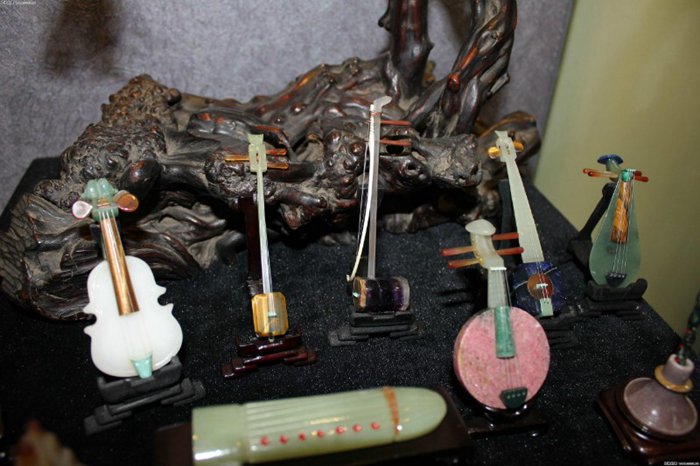
Feature of Chinese Traditional Music
Chinese music was often addressed as “Virtue Music”, “Elegant Music” and “Etiquette Music” in ancient times. In ancient Chinese society, music was not regarded as a way of entertainment, but as a practice to refine one’s virtue. Playing Guqin (Ancient Stringed Musical Instrument) was regarded as one of the primary skills that a scholar had to learn. Chinese traditional culture intensively emphasizes that a musical instrument player pay attention to one’s heart state and virtue, and that one cannot play musical instrument casually.
Traditional Musical Instruments
Pipa
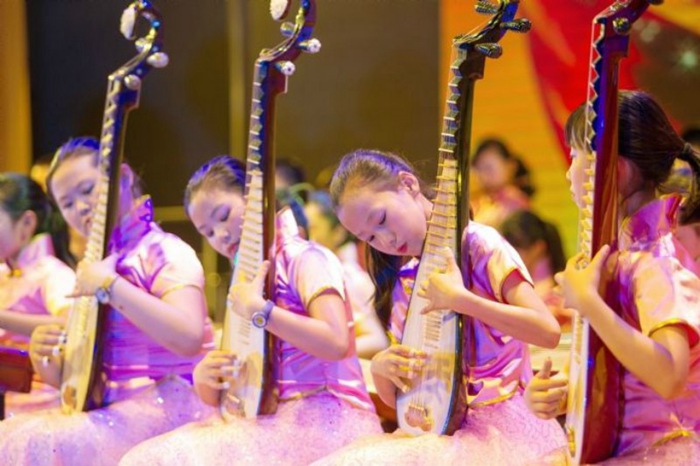
Pipa has four-stringed lute with 30 frets and pear-shaped body. The musician holds the instrument upright and play with five small plectrums attached to each finger of the right hand. The history of Pipa dates back at least 2,000 years. This instrument has extremely wide dynamic range and is remarkably rich and expressive.The Pipa tunes have very diverse styles, and are traditionally classified as either Wen Qu (civil and mild tone) or Wu Qu (martial and fierce tone).
Xun
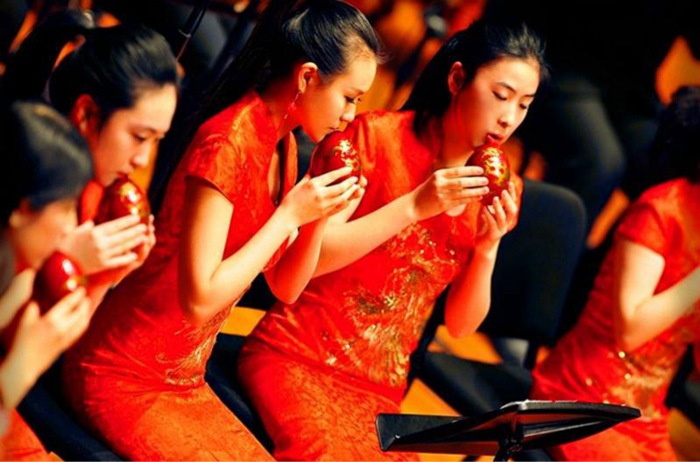
Xun is a kind of wind instrument. It’s one of the oldest musical instruments found so far in China with a history of more than 7,000 years, and play a important role in world music circle. The instrument has been found along the Yangtze River and the Yellow River as Neolithic relics, and is believed very popular in ancient China. The ancestors used a kind of oval stone with naturally formed holes on it to hunt the preys. When thrown it at the animals, the stone produced a whistling sound as the air flowed through the holes, which could have provided inspiration for early wind instruments.
Horse-Headed Fiddle
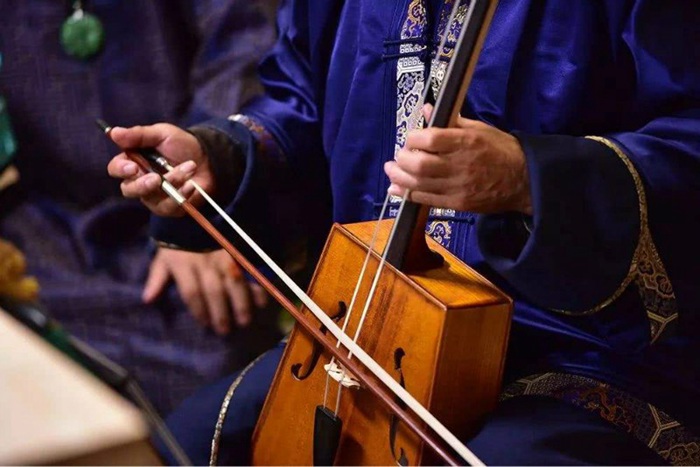
The Horse-headed fiddle is a bowed stringed-instrument with a scroll carved like a horse’s head. It is popular in Mongolian music. With a history of over 1,300 years, it even influenced European string music when Marco Polo brought one back from his travels through Asia. Its wide tonal range and deep, hazy tone color express the joy or pathos of a melody to its fullest.
Erhu
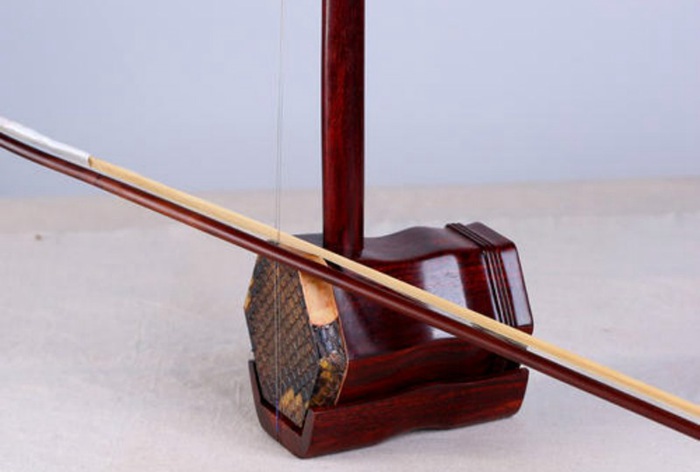
The Erhu, also called ‘Huqin’, was introduced from the western region during the Tang Dynasty. During the Song Dynasty (960 – 1279), it was refined and improved and new variations appeared. It was also an important instrument for playing the melody of Beijing Opera. Its music is usually very expressive and touching, especially when you feel down and blue.
When playing, the player usually stands the Erhu on his lap, and moves the bow across the vertical strings. The well-known music ‘Two Springs Reflect the Moon’ was created by the blind folk artist Liu Yanjun, also named A Bing by the people. Though he could not see anything of the world, he played his Erhu using his heart and imagination. This melody conjures up a poetic night scene under the moonlight and expresses the composer’s desolation and hope.
Suona
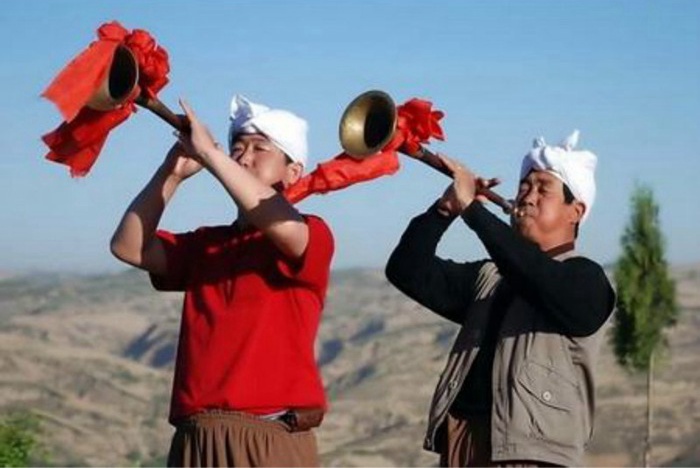
Suona, a very expressive reed instrument with a conical metal bell, is very popular in China’s vast countryside in funeral, wedding, and other celebrative occasions. The Suona has a distinctively loud sound and is used in many Chinese traditional music bands. Meanwhile, it is also an indispensable part of a number of local operas in Hebei, Shandong, Liaoning, Shandong, Shaanxi, Shanxi, and Guangdong provinces.
Modern Chinese Music
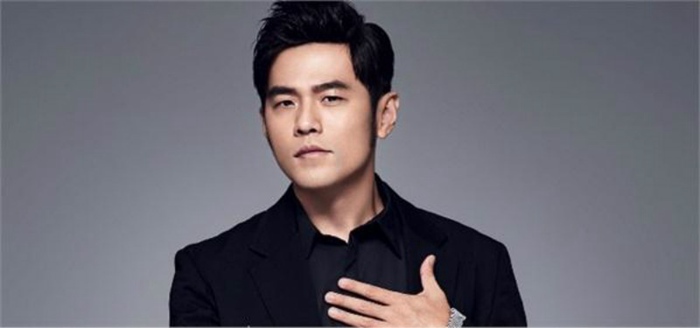
Today’s music in China is quite similar to that of modern Western’s. Just like young Westerners, now young people in China attend the concerts of famous pop stars. Modern orchestras play both adapted versions of traditional pieces and classical and modern symphonic compositions.
In modern music, many traditional facets still remain. Many traditional instruments are used in conjunction with popular instruments of Western cultures. The mixing of traditional instruments with western instruments creates a wide variety of euphonious sounds and rhythms, and the mixing with western styles of singing creates unique sounds. Many modern artists also incorporate traditional melodies into their songs, so even music using only popular Western instruments sounds different. The mixing of Western and oriental styles with traditional instruments and other instruments allows for the creation of an endless scope of expression with modern music.
Chinese Kung Fu, Chinese Traditional Martial Arts
Kungfu, also called Wushu or Chinese martial arts, is the fruit of Chinese people’s wisdom. It is a traditional Chinese sport which applies the art of attack and defence in combat and the motions engaged with a series of skill and tricks. It is also an important part of Chinese traditional culture and is the unique “martial art” in the world. Chinese Kungfu has exerted a great influence on the world.
In Chinese, Kung Fu can be used in contexts completely unrelated to martial arts, and refers colloquially to any individual accomplishment or skill cultivated through long and hard work. In contrast, wushu is a more precise term for general martial activities.
History
Chinese Kungfu has a long history in China, which originated from the productive labor of our ancient ancestors. In their hunting activities, they gradually developed the skills of splitting, chopping and pricking. This kind of primitive skills of both offensive and defensive are the basis of the martial arts.The Martial Arts we recognize today as Kung Fu had their origins in the Shang and Zhou Dynasties. During the following Qin and Han Dynasties, wrestling, swordplay and spear skills became well developed and were popular among civilians and troops. Following the Song Dynasty, various schools, boxing styles, movement sets and weapon skills flourished.
After the founding of the People’s Republic of China, martial arts flourished. In 1985, the first International Marital Arts Invitational Tournament was held in Xi ‘an, and the Preparatory Commission for the International WuShu Federation was established. This is a historic breakthrough in the development of Chinese martial arts. In 1999, International Martial Arts League was invited as a member of International Individual Events Federation by International Olympic Committee, which was the sign of Chinese Martial Arts walking global.
Classification of Chinese Kungfu
Shaolin Kung Fu
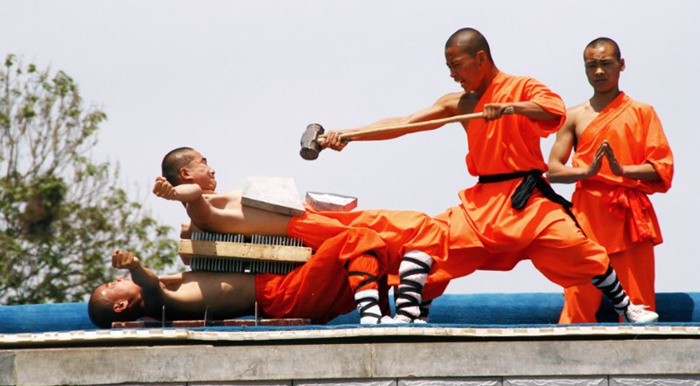
Originated in the Shaolin Temple in Henan, this is considered the premier style in China and is widely spread all over the world. Both of its physical exercise and mental training are based upon Buddhist philosophy. The Shaolin Boxing, Southern Fist (Nanquan), Northern Legs (Beitui) and Wing Chun are the representatives of this school.
Emei Kung Fu
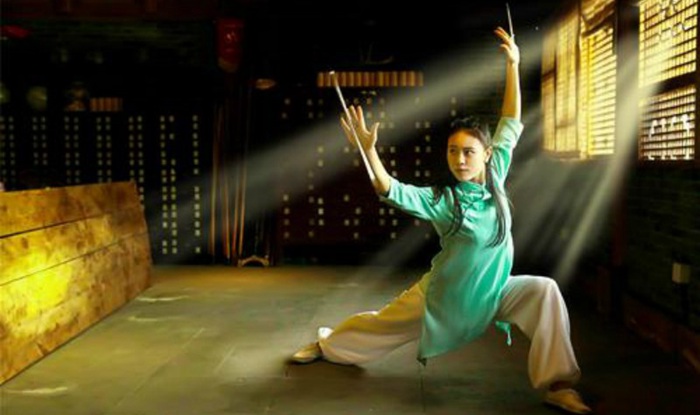
Emei Kung Fu originated from the pre-Qin period (the 21st century – 221 BC) in the famous Mt. Emei of Sichuan Province.It is named after the place where it is based, Mount Emei. Emei sect was originally created by a women. With its style stronger than Wudang sect and softer than Shaolin Kungfu, it emphasizes both strength and softness, quickness and slowness, dynamic and static, virtual and actual, ups and downs, lightness and weight.Together with Shaolin and Wudang, Emei is one of the three main schools of Chinese Kung Fu.
Wudang Kung Fu
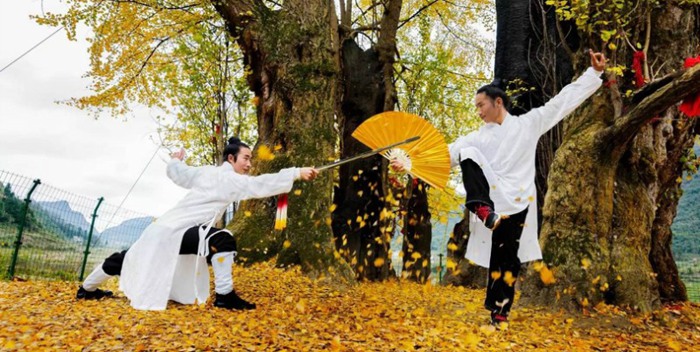
Wudang Kung Fu was created in the early years of the Ming Dynasty (1368 – 1644) by a Taoist named Zhang Sanfeng. It combines the essence of the Book of Changes and the Tao Teh King (Daodejing) of Laozi (an ancient well-known philosopher). Originated in Mt. Wudang, a Taoist holy land, it is of great value to fitness and body-building. By now, it has become popular in China and worldwide, as a kind of fitness sport. Wudang boxing, also known as the Neijia boxing, this kind of boxing is aiming at cultivating the body and health protection. At present, its major skills are well presented by Tai Chi (Taiji), Form/Intention Boxing (Xingyiquan) and Eight Diagram Palm (Baguazhang).
Kung Fu Masters
Bruce Lee
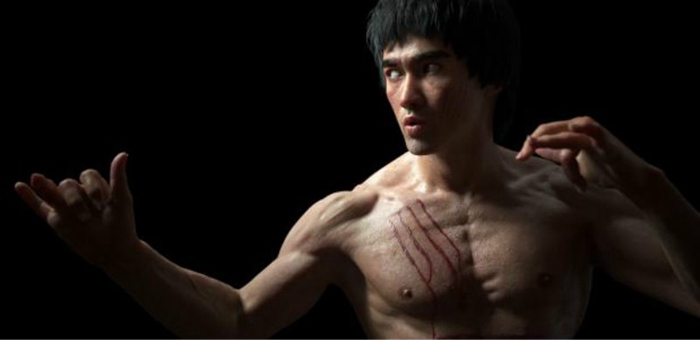
Bruce Lee is a Hong Kong and American actor, film director, martial artist and the founder of the martial art Jeet Kune Do, one of the Wushu or Kungfu styles. He is widely considered be one of the most influential martial artists of all time and often credited with helping to change the way Asians were presented in American films. He pioneered the Chinese approach to Hollywood, making it possible for westerners to understand and learn Chinese Kungfu, while making action films one of the mainstream films in Hong Kong.
Jackie Chan
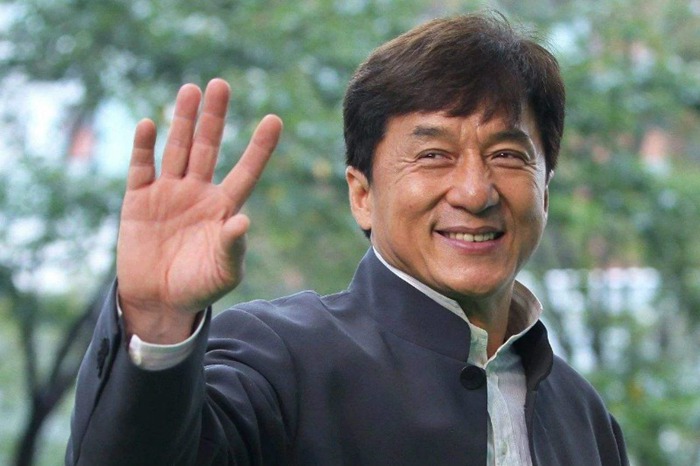
Jackie Chan not only represents the brilliant achievements of Hong Kong films, but also has an important influence on the world film industry. He is known for his acrobatic fighting style, comic timing, use of improvised weapons, and innovative stunts. He is the spokesman of Chinese Kungfu movie, showing foreigners the concept of the hero in Chinese traditional culture, and has opened a window for the world to understand Chinese culture, who become the disseminator of Chinese traditional culture.
Jet Li
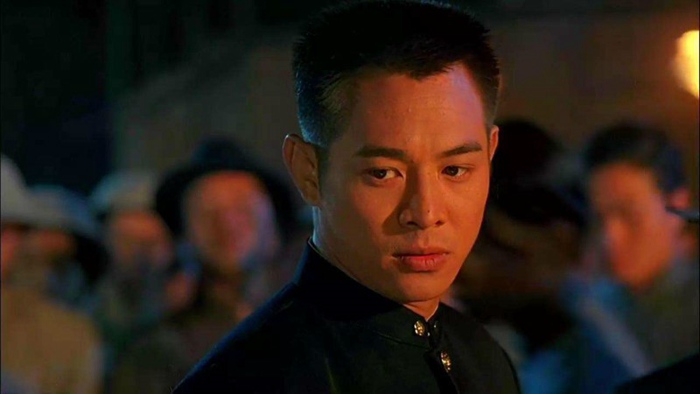
Jet Li is one of the most famous martial arts stars in the world today. He had won the national martial arts all-around champion for five consecutive years , later made his debut with the film Shaolin Temple. Jet Li has created classic figures on the screen, Fong Sai Yuk, Zhang Sanfeng, Huo Yuanjia, Chen Zhen, and so on, reputed as a Kungfu emperor by domestic and foreign media . After 1997, he starred in a number of Hollywood blockbusters, joining a-list action star in Hollywood.
Donnie Yen

Yen is one of Hong Kong’s top action stars. Yen has displayed notable skills in a wide variety of martial arts, being well-versed in Tai Chi, Boxing, Kickboxing, Jeet Kune Do, Hapkido, Taekwondo, Karate, Muay Thai, Wrestling, Brazilian Jiu-Jitsu, Judo, Wing Chun, and Wushu. In Hong Kong’s action actors and martial arts guides, Donnie Yen is alone into one.
Ullens Center for Contemporary Art, A Global Arts Center in Beijing
The ullens center for contemporary art (UCCA) aims to become a global arts center in Beijing. It is a non-profit entity that offers exhibitions and other programs designed to help visitors learn about Chinese art and culture. The centre is also actively involved in promoting the growth and development of Chinese art to revive public interest in all things cultural.
UCCA was founded by baron and baroness guy and Miriam ullen DE schutten. They are considered one of the world’s greatest patrons of the arts and formidable collectors of art. The baron retired in 2000 and now devotes himself to charities including the ullens centre.
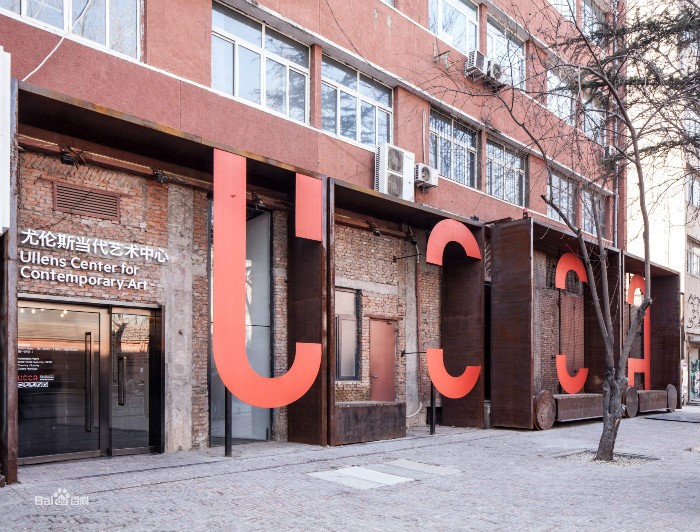
UCCA is based on three factories, reflecting some of the influence of Bauhaus architecture. They were recently refurbished and offer less than 10,000 square metres of international exhibition space. It is one of the best preserved exhibition Spaces in the country.
The ullens exhibition is not permanent. They are designed to make it easier for people to have access to a particular style of art, or to a particular artist. Visitors should familiarize themselves with the current exhibition program before visiting UCCA.
In writing about UCCA, xu zhen (a manufacturing company) from Shanghai and his sensible critique of consumerism. The exhibition includes performance art, installation, video, painting, etc.
Past exhibitions include; Tyronn Simon, wang keping, tianuo sejal, wang xingwei, tepe kanoki, xie tannin, duchamp, and the conceptual and practical achievements of young Chinese artists.
Future exhibitions planned include art-post Internet, Lee Mingwei, Pawel Althamer and Broached retreat.
UCCA is heavily involved in public education of the arts. The centre offers more than 500 cultural programmes a year. There are regular art lectures, film screenings, performances, festivals and workshops that visitors can attend (although Numbers may be limited, depending on popular demand for any program).
There is a store on the UCCA grounds. It offers the largest limited edition collection of contemporary art in China. The collection typically includes more than 40 artists, many of whom were custom-made for the store. You can also find plenty of designs from many of China’s leading designers.
There’s also an art book store where you can store a lot of art materials. It is worth noting that the vast majority of teaching texts are only in Chinese, with very few English works to choose from.









